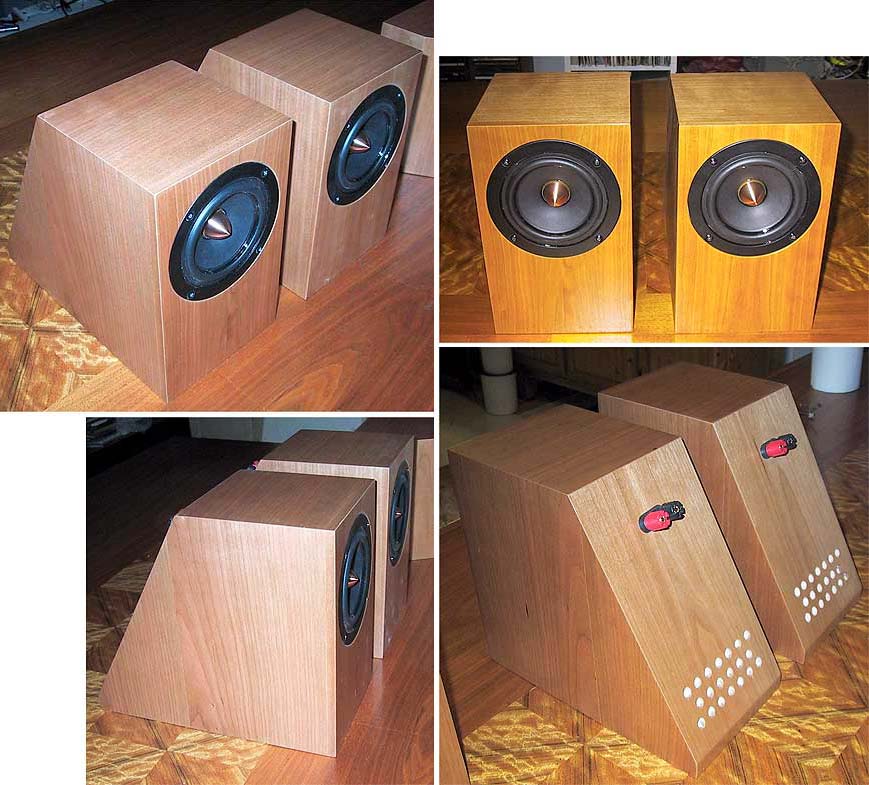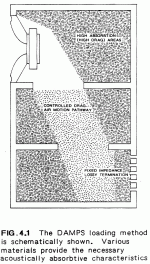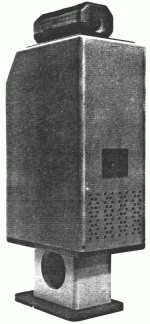I'm planning a design with a pair of Seas CA22RNY and I want a slim closed enclosure with a qt of 0,5 for the best low end extension and transient response. I need over 50 liters to achieve that. The problem is that with the current enclosure dimentions I have a qt of over 0,7 and volume of only 20 liters.
For that reason I wonder if aperiodic loading could be a solution? Maybe make some slits in the back plate and cover them with damping material. Or some finished aperiodic vents?
For that reason I wonder if aperiodic loading could be a solution? Maybe make some slits in the back plate and cover them with damping material. Or some finished aperiodic vents?
Attachments
Defo, I wouldn't worry about transients in the low end. The room will dominate there and the transients in music are higher in frequency.
Dan
Dan
Hello, are there any guidelines as to how many, and size of the holes? And what type of material for damping? I believe the Scanspeak vents, are used per cubic foot, but doesn't the type of driver (ie high Q) make a difference?
I use open cel foam to damp the ports. I have a number of densities to play with. I typically use Sd or less as a ref (start with less you can always drill more).
Best way to tune is to measure impedance... you want to reduce the magnitude of the impedance peak. Almost flat is perfect. A click test with a battery can be used doe a sonic test. Hard to calibrate... GM has posted on this one. It can also be done by ear with music.
dave
Best way to tune is to measure impedance... you want to reduce the magnitude of the impedance peak. Almost flat is perfect. A click test with a battery can be used doe a sonic test. Hard to calibrate... GM has posted on this one. It can also be done by ear with music.
dave
Best way to tune is to measure impedance... you want to reduce the magnitude of the impedance peak. Almost flat is perfect. A click test with a battery can be used doe a sonic test. Hard to calibrate... GM has posted on this one. It can also be done by ear with music.
dave
What would you listen for Dave?
Thanks,
Dan
I use open cel foam to damp the ports. I have a number of densities to play with. I typically use Sd or less as a ref (start with less you can always drill more).
Best way to tune is to measure impedance... you want to reduce the magnitude of the impedance peak. Almost flat is perfect. A click test with a battery can be used doe a sonic test. Hard to calibrate... GM has posted on this one. It can also be done by ear with music.
dave
So the thicker or thinner layer (or higher density?) of damping material behind the holes is the way to experiment? 🙂
Can the Dayton woofer tester be used for this?
How do you think the concept presented in the first post looks like? Is it a bad idea with such a slim enclosure?
When faced with listening i pick some well recorded bass and listen for well defined bass with no artificial overhang.
The woofer WT-3 (or better WT-2) will work fine.
the tall box should work well... the aperiodic vents would go at the top. You might want to leave the top removable to get at the posts to adject damping.
I use different densities of foam as well as different thicknesses. Fortunately i get a lot of apple service parts boxes which gives up supplying all the foam i ever need.
I got a big boost from the work done by Bill Perkins on aperiodic damping, and then added experience on top of that. Attached are some pics & diagram of the speaker that culminated Bill's research.
dave
The woofer WT-3 (or better WT-2) will work fine.
the tall box should work well... the aperiodic vents would go at the top. You might want to leave the top removable to get at the posts to adject damping.
I use different densities of foam as well as different thicknesses. Fortunately i get a lot of apple service parts boxes which gives up supplying all the foam i ever need.
I got a big boost from the work done by Bill Perkins on aperiodic damping, and then added experience on top of that. Attached are some pics & diagram of the speaker that culminated Bill's research.
dave
Attachments
When faced with listening i pick some well recorded bass and listen for well defined bass with no artificial overhang.
Seems like a daunting task. I've learned that anytime I do something by ear, I screw it up--unless it's tuning an instrument. Measurements always do a better job for me. Can you really get this right in a regular room or do you have an anechoic chamber? Have you done this by ear and then measured it to see how you did?
Thanks again,
Dan
In room. Yes, measure confirms ear (it is a chore to hump a big woofer into my office wher ethe impedance jig is), You can usually close in on optimum faster with the impedance tester at hand.
dave
dave
does the AP holes/mat, etc have to be directly on the wall behind the woofer or is it any other wall
Measuring the woofer Q parameters in-box will indeed give you the Qtc. It's a good learning tool to measure the woofer free-air, run a sealed simulation on it, measure in the sealed box, then progressively make it aperiodic. You can compare with the effect of the Ql box leakage parameter in WinISD for example and future reference.
IG
IG
does the AP holes/mat, etc have to be directly on the wall behind the woofer or is it any other wall
Doesn't matter. It's basically a pressure valve. The wavelengths we are dealing with here are about 30x larger than the box.
Aperiodic is my 2nd favorite speaker design.
It's only preceded by the infamouse OB 😀
Aperiodic is my 2nd favorite speaker design.
Care to share any aperiodic design of yours? You've built lots of cool things!
Here's one of mine:
http://www.diyaudio.com/forums/full-range/174902-need-advice-execution-aperiodic-vent-2.html#post2330229
IG
Hey thanx!
Here is a little one I built a few months ago.
http://www.diyaudio.com/forums/multi-way/36254-try-ambiophonics-your-speakers-76.html#post3103490
Sounded great! Got down to 40Hz (listening 18" away) that's what it was designed for 😀
I've built a few several years ago but lost all the photos. Tragic incident with my computer....I lost pics of about 20 speakers. I managed to save 1. Come to think of it, that was aperiodic also! It was a failed attempt at a quarter wave TL, so I made it aperiodic.
Let me find that one....hold on.
Here is a little one I built a few months ago.
http://www.diyaudio.com/forums/multi-way/36254-try-ambiophonics-your-speakers-76.html#post3103490
Sounded great! Got down to 40Hz (listening 18" away) that's what it was designed for 😀
I've built a few several years ago but lost all the photos. Tragic incident with my computer....I lost pics of about 20 speakers. I managed to save 1. Come to think of it, that was aperiodic also! It was a failed attempt at a quarter wave TL, so I made it aperiodic.
Let me find that one....hold on.
Here it is.
This is actually open baffle for the mids and highs (rear tweeter) very complicated crossover. This was tha last time I used passive crossovers. The bass woofer is loaded by the aperiodic labyrinth.

This is actually open baffle for the mids and highs (rear tweeter) very complicated crossover. This was tha last time I used passive crossovers. The bass woofer is loaded by the aperiodic labyrinth.

Last edited:
- Status
- Not open for further replies.
- Home
- Loudspeakers
- Multi-Way
- Aperiodic loading to lower qt



